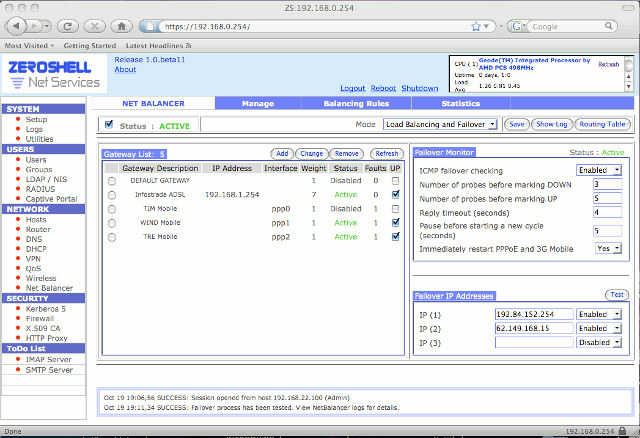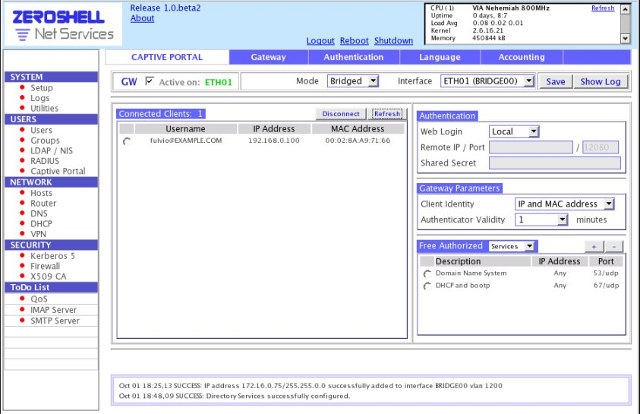We’ve just seen pfSense is now available for Arm via firewall appliances such as Netgate SG-3100, but AFAIK there’s no pfSense community Arm firmware images yet. Several Arm SoCs & boards are now supported by FreeBSD, so in theory pfSense could be ported to those, but the page on FreeBSD does not seem to have been updated for a while.
If you want a firewall distributions with an easy-to-user web interface like pfSense, but that also works on cheaper Arm hardware, Linux based ZeroShell distribution could be worth a try, as beside working on Intel & AMD x86 platforms, the developers also provides images for Raspberry Pi 2 & 3 boards, and several Orange Pi boards, namely Orange Pi R1, Orange Pi Zero, Orange Pi PC, and Orange Pi Plus/Plus2. The latter is the only supported Arm board with Gigabit Ethernet.

Some of ZeroShell features include:
- Load Balancing and Failover of multiple Internet connections.
- UMTS/HSDPA connections via 3G modems.
- RADIUS server for providing secure authentication and automatic management of the encryption keys to WiFi networks.
- QoS (Quality of Service) management and traffic shaping.
- HTTP Proxy server to block web pages containing virus.
- Wireless Access Point mode with Multiple SSID and VLAN support.
- Host-to-LAN VPN with L2TP/IPsec in which L2TP (Layer 2 Tunneling Protocol) authenticated with Kerberos v5.
- LAN-to-LAN VPN with encapsulation of Ethernet datagrams in SSL/TLS tunnel with support for 802.1Q VLAN.
- Router with static and dynamic routes (RIPv2 with MD5 or plain text authentication and Split Horizon and Poisoned Reverse algorithms).
- 802.1d bridge with Spanning Tree protocol to avoid loops even in the presence of redundant paths.
- 802.1Q Virtual LAN (tagged VLAN).
- Many more…

You’ll find the complete list of features on the project page. You’ll find live CD images for x86, and micro SD card image for supported Arm boards on the download page, and support is available via the forums. However, I have not been able to find the source code, nor instructions to build from source.
Via Time4EE

Jean-Luc started CNX Software in 2010 as a part-time endeavor, before quitting his job as a software engineering manager, and starting to write daily news, and reviews full time later in 2011.
Support CNX Software! Donate via cryptocurrencies, become a Patron on Patreon, or purchase goods on Amazon or Aliexpress




